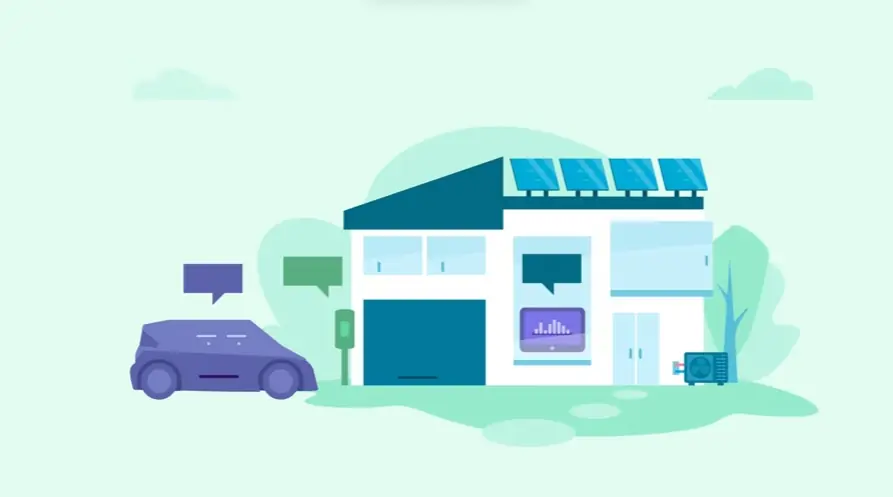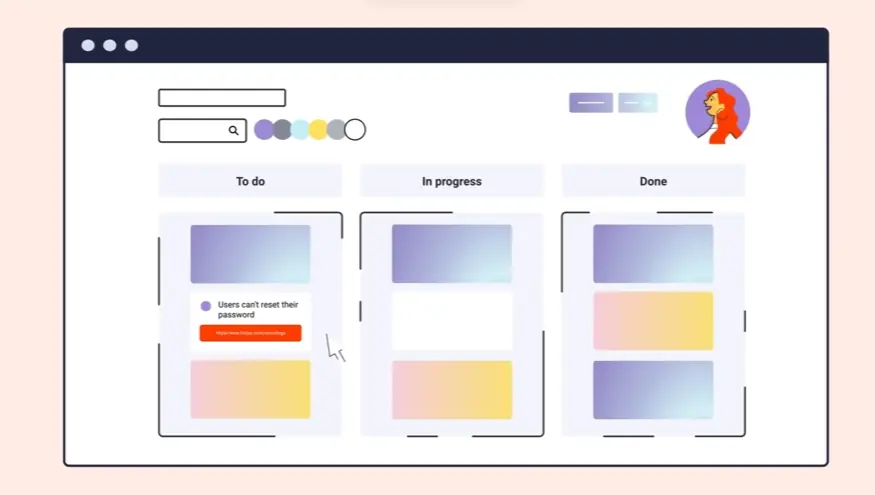
How should I plan a user guide video for complex software?
Plan user guide videos for complex software by breaking down processes into digestible steps. Utilize screen recordings, animations, and clear narration, targeting a specific audience.
What are essential elements of an effective onboarding tutorial video?
Effective onboarding tutorials blend visuals and audio, starting with a welcome, outlining the purpose, and providing concise instructions with real-world examples.
How can I adapt existing help documentation into a compelling video guide?
Adapt help documentation into video guides by visualizing key concepts with screen recordings, animations, and engaging narration. Add interactive elements and examples.
What scripting best practices ensure clarity in a feature demo video?
Ensure clarity in feature demos with concise language, focusing on benefits. Use a logical flow, highlighting functionalities with clear visuals and real-world examples.
Should my software tutorial use screen recording or animation, and why?
Choose between screen recording and animation based on software complexity. Animation suits abstract concepts, while screen recording demonstrates existing software.
How do I determine the ideal length for a feature explanation video?
Determine video length based on content complexity and audience attention spans. Prioritize brevity, dividing longer explanations into shorter, focused videos.
How can I use visual hierarchy to improve a user guide video?
Improve user guide videos with visual hierarchy, using cues like size and color to guide attention. Highlight key features and actions with clear visuals and text.
What are common pitfalls to avoid when planning a tutorial video?
Avoid jargon, technical language, and information overload in tutorial videos. Keep content concise, focused, and engaging for optimal user experience.
How can I ensure my user guide video is accessible to users with disabilities?
Ensure accessibility by providing captions, transcripts, and audio descriptions. Maintain sufficient color contrast and keyboard navigation for all users.
How do leading SaaS companies use onboarding videos for customer success?
Onboarding videos improve user adoption and reduce churn by showcasing key features, providing personalized walkthroughs, and offering ongoing support.
How can my user guide video reinforce my brand identity?
Reinforce brand identity by incorporating brand colors, logos, and messaging. Maintain a consistent visual style and tone aligned with brand guidelines.
What pre-production steps are crucial for a successful video tutorial?
Crucial pre-production steps include defining objectives, target audience, script development, and visual style guidelines for successful video tutorials.
How do I create a product walkthrough that's engaging and informative?
Create engaging product walkthroughs by focusing on benefits, using real-world examples, clear visuals, and concise narration.
How can I incorporate interactive elements into my user guide video?
Incorporate interactive elements like quizzes and clickable hotspots to enhance engagement and knowledge retention in user guide videos.
What narrative structures work best for feature demonstration videos?
Effective narrative structures for feature demonstrations include problem-solution, chronological order, or feature-benefit approaches. Fixed-fee pricing for a 60-second video ranges from $1000-$6000 depending on complexity, with multiple revisions included. Turnaround time is typically 3-8 weeks.
How to plan and optimize User Guide Feature Videos?
Story-Driven Design: "Don't wait for the muse. Your job is to make something." - Ed Catmull. Advids believes consistent creative output is key. For a healthcare client, we developed a series of user guide feature videos that followed a patient's journey through their treatment process. This narrative approach simplified complex medical information and resonated emotionally with the target audience, leading to increased patient satisfaction and treatment adherence.
Actionable: Simplify complex information through compelling narratives and visuals.
Aesthetic Appeal: "Style—all who have it share one thing: originality." - Diana Vreeland. Advids understands the power of unique visuals. For a cosmetics client, we created visually stunning user guide feature videos that reflected the brand's vibrant and luxurious aesthetic. This approach elevated the perceived value of the product and drove significant increases in sales conversions.
Actionable: Enhance perceived value by aligning video aesthetics with brand identity.
User-Centric Approach: "Accessibility is not a feature, it's a requirement." - Jeffrey Zeldman. Advids prioritizes inclusivity in all our video productions. For a technology client, we developed user guide feature videos with closed captions and multiple language options, ensuring accessibility for a wider audience and demonstrating the client's commitment to inclusivity.
Actionable: Prioritize accessibility by incorporating features like captions and translations.
Strategic Simplicity: "IT is becoming more and more just a commodity." - Nicholas Carr. Advids recognizes the need to cut through the noise. For a manufacturing client, we created concise and focused user guide feature videos that highlighted the key benefits of their complex machinery, improving customer understanding and driving sales leads.
Actionable: Communicate key benefits clearly and concisely, avoiding technical jargon.
Value-Driven Content: "Marketing is everything and everything is marketing." - Regis McKenna. Advids embraces a holistic marketing approach. For a food and beverage client, we integrated user guide feature videos into their overall marketing strategy, using them to drive traffic to their website, generate leads, and build brand loyalty. The videos showcased the product's versatility and ease of use, leading to increased sales and brand awareness.
Actionable: Integrate video content seamlessly into your overall marketing strategy.
Why Advids for User Guide Feature Video?
At Advids, we create compelling User Guide Feature Videos that simplify complex processes and enhance user experiences. Our blend of creative storytelling, advanced technology, and proven experience ensures your guides are engaging, informative, and effective.
Unlocking the Power of User Guide Feature Video:
Customized User Guide Feature Video Solutions: We tailor each video to your specific needs, whether you require explainer videos, tutorials, or interactive walkthroughs, ensuring seamless integration with your brand and target audience.
Creative Storytelling Through Animation: Our team crafts narratives that captivate viewers and make learning enjoyable, transforming user manuals into dynamic visual experiences.
Cutting-Edge User Guide Feature Video Technology: We utilize the latest software and techniques to create visually stunning videos that leave a lasting impact, maximizing user comprehension and satisfaction.
Experience and Expertise:
12+ Years of Proven Success: With over 3400 clients served, we possess a deep understanding of what makes User Guide Feature Videos truly effective.
Trusted by Industry Leaders: From startups to Fortune 500 companies, brands like Razorpay, Ola, Mercedes, the United Nations, Continental, and Mercer rely on our expertise to create impactful user guides.
Client Satisfaction Guaranteed: Our commitment to excellence is reflected in over 109 five-star Google reviews, showcasing our talent, creativity, and dedication to client satisfaction.
A Collaborative Approach:
Collaborative Process: We work closely with you throughout the entire process, from initial concept to final delivery, ensuring your vision is realized and your users' needs are met.
Strategic Communication: Open and transparent communication is paramount. We prioritize understanding your target audience, brand identity, and specific requirements to create User Guide Feature Videos that deliver exceptional results. We have completed over 320 successful User Guide Feature Video projects.
Ready to unlock the potential of User Guide Feature Video for your business with the latest video design trends of 2024? Let Advids be your trusted partner in transforming your ideas into engaging and effective animated experiences.
Checkout some of the projects and work our team at Advids has been producing:
What is a User Guide Feature Video?
A User Guide feature video is a dynamic instructional video designed to guide users on how to effectively utilize a product or service. These videos are typically short, engaging, and visually appealing, making them an effective way to communicate complex information in a clear and concise manner. They are often used to provide product tutorials, explain new features, or troubleshoot common issues.
User Guide Feature Videos are used in a variety of contexts, including product onboarding , customer support, and marketing. They can be used to introduce new users to a product, provide step-by-step instructions for completing tasks, or demonstrate the benefits of using a product.
What do top User Guide Feature Videos have in common?
Master user guide feature videos by focusing on clear communication and impactful visuals to drive user engagement .
Clear Problem/Solution Focus - Highlight the user's pain point and immediately show how the feature solves it. Focus on a single, impactful problem.
- ideal user persona - Show a relatable user archetype interacting with the feature. Use realistic visuals and dialogue.
- Intuitive User Journey - Guide viewers smoothly through the feature's workflow. Use visual cues and on-screen text.
- Feature-Specific Highlights - Emphasize key benefits with concise, impactful language . Use strong visuals to support the text.
- concise screen recordings - Use high-quality recordings that are short, focused, and easy to follow. Avoid unnecessary steps.
- Compelling Visual Narrative - craft a story that resonates emotionally with the viewer. Use authentic scenarios and characters.
- Realistic Application Examples - Show the feature in action within a real-world context . Use diverse examples.
- strategic call to action - Provide a clear, concise call to action that is easy to understand and follow. Use strong visuals.
- measurable results showcase - Present data that clearly demonstrates the feature's impact . Use charts or graphs.
- Defined Scope and Context - Clearly define the feature's purpose and limitations. Set expectations upfront.
What makes User Guide Feature Videos effective?
A fundamental aspect of User Guide Feature Videos is their design to cater to the specific needs of the target audience. They are driven by a clear understanding of user challenges and aim to provide solutions in a way that is both informative and engaging.
Methods for creating effective User Guide Feature Videos involve a combination of visual storytelling , interactive elements , and personalized content . These techniques aim to capture user attention , simplify complex information , and empower users to confidently navigate the product or service.
The effectiveness of User Guide Feature Videos lies in their ability to bridge the gap between complex information and user understanding. They provide a clear and concise path to knowledge, making it easier for users to learn, troubleshoot, and ultimately achieve their goals.
How long should your User Guide Feature Video be?
Optimize user guide video length for maximum impact by aligning video type, content, and viewer engagement .
Pre-production Considerations for Determining Video Length:
User guide feature video length guide
| User Guide Feature Types | Video Length | Use Case | Funnel |
|---|
| Animated Screencast | 45-60 seconds | Show software navigation concisely, highlighting key features with engaging visuals Ideal for complex software, using a clear, step-by-step approach | Awareness |
| Explainer Video | 60-90 seconds | Clearly communicate the value proposition and core functionality of a feature using simple language and visuals, possibly with a cartoon style | Consideration |
| Tutorial Video | 1-2 minutes | Guide users through a specific task or workflow, providing detailed instructions and visual demonstrations, potentially using a screen recording style | Decision |
| Live Action Demo | 1-2 minutes | Showcase the feature in a real-world context, demonstrating its usability and benefits, using a clean and professional aesthetic | Conversion |
| Screen Recording | 30-45 seconds | Quickly demonstrate a feature's functionality without extra elements, focusing on efficiency and clarity | Engagement |
How to create User Guide Feature Videos?
Crafting compelling user guide feature videos requires a strategic approach . Mastering pre-production and production phases ensures your videos effectively communicate product value and drive user adoption .
* Target Audience - Understanding your audience ensures the video's tone and style resonate.- Key Message - A strong message clearly communicates the feature's value proposition.
- storyboard design - A well-designed storyboard ensures a cohesive and effective narrative.
- Visual Style Selection - The right visual style enhances brand identity and user engagement.
- Scriptwriting - A well-written script ensures clarity, conciseness, and user comprehension.
- Video Filming - high-quality footage is crucial for a professional and impactful video.
- Video Editing - Smooth editing creates a professional, engaging viewing experience.
- Motion Graphics - Strategic use of graphics enhances understanding and memorability.
- Call to Action - A clear CTA drives user engagement and encourages desired actions.
- Platform Optimization - Optimization ensures the video is easily accessible and viewable.
Incorporating Screen Recordings into User Guide Videos
Creating effective screen recordings is crucial for user guide videos. Let's dive into the specifics of incorporating screen recordings to enhance user engagement and product understanding. Remember that frustrating experience with a confusing user guide? Well-crafted screen recordings can prevent that, offering a clear, visual walkthrough of your product's features. Consider whether your screen recording is part of a larger product explainer video, as this will influence its scope and focus.
Screen recordings provide a realistic view of your product's interface, unlike onboarding animation videos, which, while engaging, may not fully represent the user experience. Now, let's explore some key considerations for creating compelling screen recordings:
- Planning and Preparation: Define your recording's objective and target audience. Prepare a concise script to ensure clear communication. Select user-friendly screen recording software with the necessary features.
- Visual and Audio Clarity: optimize screen resolution and visuals for easy viewing. Ensure high-quality audio by testing your microphone beforehand. Focus on essential steps, avoiding unnecessary details.
- Enhancing Engagement: Maintain a smooth, engaging pace throughout the recording. Use annotations, arrows, and zoom to emphasize key elements. While onboarding animation videos can be engaging, screen recordings offer a realistic view of your product's interface.
- Post-Production Polish: Trim unnecessary footage, add transitions, and ensure a polished final product . Incorporate appropriate music or sound effects to enhance engagement. Remember to add captions or transcripts for accessibility.
Refer to the previous sections for details on video length and platform optimization. By focusing on these screen recording specifics, we can create user guide videos that are both informative and engaging, ultimately driving user adoption and satisfaction.
Measuring the Effectiveness of User Guide Videos
Now that we've covered creating compelling user guide videos, let's dive into measuring their success. Evaluating performance helps us refine our approach and maximize impact . Are we truly connecting with our audience and achieving our goals? Let's find out.
Understanding how viewers interact with our content allows us to create even more effective videos in the future. For software tutorial videos, a key metric is user error reduction . Are users making fewer mistakes after watching the tutorial? This directly reflects the video's effectiveness. Similarly, for feature highlight videos, focus on driving conversions. Track click-through rates on your call to action to see how well the video encourages users to explore the new feature.
Remember the different video types we discussed earlier? For shorter screen recordings, prioritize metrics like play rate and click-through rate. For longer tutorials or explainer videos, audience retention becomes more critical. Where are viewers dropping off? If people are leaving halfway through, it might mean that part of your video is too slow or confusing.
- Engagement: Look at likes, shares, comments, and social media mentions. Active engagement signifies valuable content. Are people talking about our videos? Are they sharing them with their networks?
- Website Behavior: Monitor time-on-page and bounce rate. Longer times and low bounce rates indicate engaging content. Are viewers staying on our site after watching the video? Are they exploring other resources?
- Conversion & Action: Track click-through rates on your call to action and overall conversion rates. Strong conversion rates validate video effectiveness. Are viewers taking the desired action after watching the video?
- Direct Feedback: Gather user input through surveys, feedback forms, and even user interviews or focus groups. Direct feedback provides invaluable insights. What are viewers saying about our videos? What are their suggestions for improvement?
By analyzing these metrics, we can gain a deeper understanding of what works and what doesn't. This allows us to continually improve our user guide videos and maximize their impact on our audience.
Author & Editor Bio
A video producer with a passion for creating compelling video narratives, Jai Ghosh brings a wealth of experience to his role. His background in Digital Journalism and over 11 years of freelance media consulting inform his approach to video production. For the past 7 years, he has been a vital part of the Advids team, honing his expertise in video content planning, creation, and strategy.
His collaborative approach ensures that he works closely with clients, from startups to enterprises, to understand their communication goals and deliver impactful video solutions. He thrives on transforming ideas into engaging videos, whether it's a product demo, an educational explainer, or a brand story.
An avid reader of modern marketing literature, he keeps his knowledge current. Among his favorite reads from 2024 are "Balls Out Marketing" by Peter Roesler, "Give to Grow" by Mo Bunnell and "For the Culture" by Marcus Collins. His results-driven approach ensures that video content resonates with audiences and helps businesses flourish.




